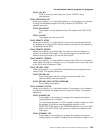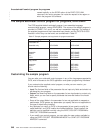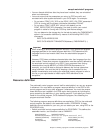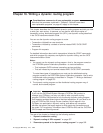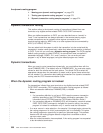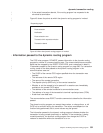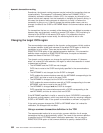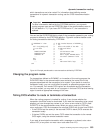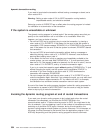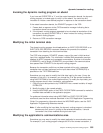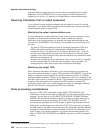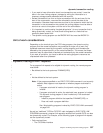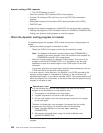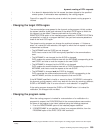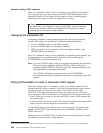
which transactions are to be routed. For information about defining remote
transactions for dynamic transaction routing, see the
CICS Intercommunication
Guide
.
Important
To route a transaction defined by the DTRTRAN definition, your dynamic
routing program must set the DYRDTRRJ field of the communications area to
'N' (the default is 'Y'). If you leave DYTDTRRJ set to 'Y', the transaction is
rejected.
You can test the DYRDTRXN field to check if the transaction passed to your routing
program is defined by the DTRTRAN definition. Figure 44 contains skeleton code
for routing transactions defined by DTRTRAN.
Changing the program name
For transactions defined as DYNAMIC, on invocation of the routing program the
DYRLPROG field in the communications area contains the name of the initial
program associated with the transaction to be routed. If you decide to route the
transaction locally, you can use this field to specify an alternative program to be
run. For example, if all remote CICS regions are unavailable and the transaction
cannot be routed, you may want to run a program in the local CICS terminal-owning
region to send an appropriate message to the user.
Telling CICS whether to route or terminate a transaction
When the routing program is invoked for routing, it can choose whether the
transaction should be routed or terminated. If you want the transaction to be routed,
whether you have changed any values or not, return a zero value to CICS in field
DYRRETC of the communications area. When you return control to CICS with
return code zero, CICS first compares the returned SYSID with its own local SYSID:
v If the SYSIDs are the same (or the returned SYSID is blank) CICS executes the
transaction locally.
v If the two SYSIDs are not the same, CICS routes the transaction to the remote
CICS region, using the remote transaction name.
If you want to terminate the transaction with a message or an abend, set a return
code of X'8' (or any other non-zero return code other than X'4').
if DYRDTRXN='Y' then /* Is DYP invoked because of DTRTRAN */
do /* .. Yes */
Call Find_AOR(sysid) /* Select the SYSID of the AOR */
if rc=0 then /* Is AOR available? */
do /* .. Yes */
DYRRETC=RETCOD0 /* Set OK Return Code */
DYRSYSID=sysid /* Set the sysid */
DYRDTRRJ='N' /* Don't reject DTRTRAN defns */
... /* Set other commarea fields */
end /* */
else /* .. No */
... /* AOR unavailable logic */
end /* */
Figure 44. Example pseudocode to route transactions defined by DTRTRAN
dynamic transaction routing
Chapter 16. Writing a dynamic routing program 553
|



